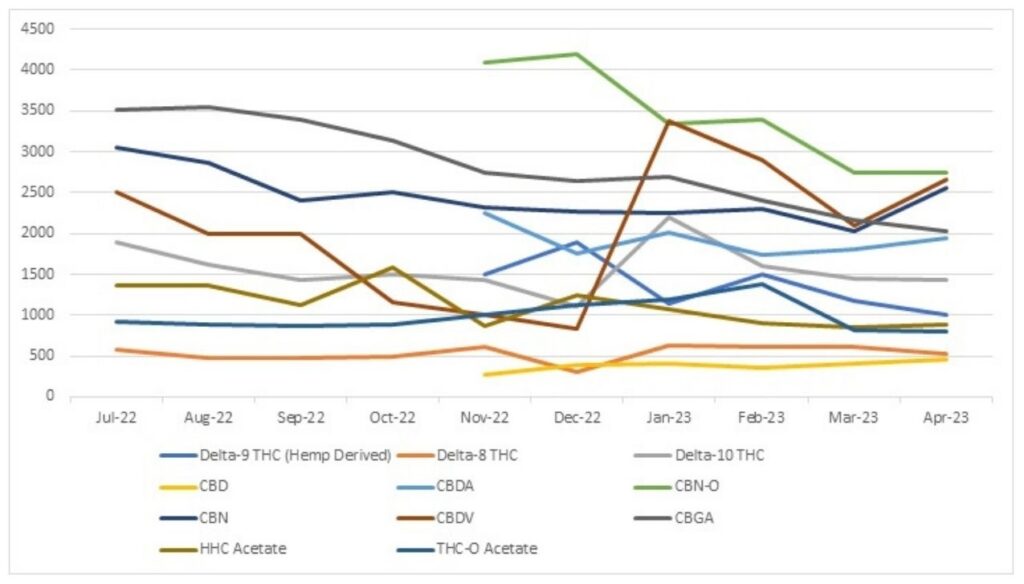For all our grumbling about the US cannabis market, Spain has little to recommend itself at this point in time. Spain grows a lot of cannabis, over 23k kilos last year, with a similar number expected this year. However, 81% is destined for export with the remainder used for research or production of two pharmaceutical products approved for prescription.
Access to medical cannabis for Spanish patients is currently severely limited. That will change soon. The Spanish health authorities are two months late in approving the regulatory framework requested by the Health Commission of the Congress for setting up regulated medical access to cannabis for its citizens. The regulations are expected soon and would begin life as a stricter version of Germany’s medical cannabis program. Legal recreational cannabis seems far off after being voted down in the Spanish parliament’s major parties.The status of consumable CBD and seed sales also unclear although readily available in stores and online.
But one shining diamond in the rough where Spain currently outpaces the US can be found in their non-profit cannabis clubs’ model. After attending ICBC’s business conference and the three-day cannabis consumer festival ‘Spannabis’ myself and colleagues would head to downtown Barcelona for amazing food on a terrace and a trip to one of the hundreds of cannabis clubs located in the iconic city. The clubs are structured as non-profit social and recreational organizations. Only members can enter and purchase and consume cannabis. The clubs have the support of the local government but not the federal government.Clubs remain in a legal grey zone even as they grow in popularity in cities like Barcelona and Valencia and tourism destinations like Ibiza.
At Choko in downtown Barcelona I prefilled my membership online the day before. When I arrived was verified, paid my annual membership fee of ~$40 and given a membership card that I could add money on to spend inside the club all all items for sale. Within the club you could buy alcohol, drinks, snacks and cannabis. God forbid, you could even get pre-rolls with 25% tobacco mixed in. The environment was dark and intimate. Tasteful local art was showcased on the wall. A live DJ mixed a tribal house set at a volume where you could still talk to the people near you.
The sitting encouraged interaction with others at large tables and circular shaped clusters of couches and comfy chairs. The prices for cannabis and everything else was ultra-affordable. The cannabis counter featured a selection of 12 types of quality flower as well as some limited selections of hash, concentrates and vape cartridges. The pace was relaxed, there was no pressure to keep spending money, the setting was hip but not overdone.
Why is the US cannabis consumption lounge so far from this excellent model? The primary factor is the supremacy of grey market operators, unimpeded by laws and regulations, who can set up a premise that understands and meets its club member’s desire. Mixing alcohol and cannabis? No problem.Tobacco mixed into pre-rolls? Why not? Reasonable prices with no pressure to keep buying products? Yes, no problem.
At the beginning of adult rec. cannabis markets like Colorado and Washington coming online myself and many others thought that social consumption lounges would be one of the easier problems to solve. Mix using and buying cannabis with food, beer and wine, community, and a nice vibe to relax. Sure, tobacco is never going to be disallowed in the US and there would be restrictions: zoning, limits on amount of alcohol (beer and wine only) and cannabis sold. But as they say, it’s not rocket science. Lounges remain for the most part illegal, controversial or sterile where they do exist and have yet to catch on it popularity.
We see the same dynamic in place in New York City right now with illegal dispensaries providing what consumers want at a reasonable price. If any city will lead the way on consumption lounges in the US it will be Las Vegas. A city always in tune with providing what tourists and consumers want with profit in mind will see the first lounges open later this year.
Marc Brandl resides in Brussels and is a Research Analyst at Arcview Consulting. Marc publishes his own newsletter on LinkedIn and substack, ‘Cannabis Space’
Editors’ Note: This is an excerpt from our Monthly Playbook. If you would like to read the full monthly playbook and join the thousands of others you can sign up below.













